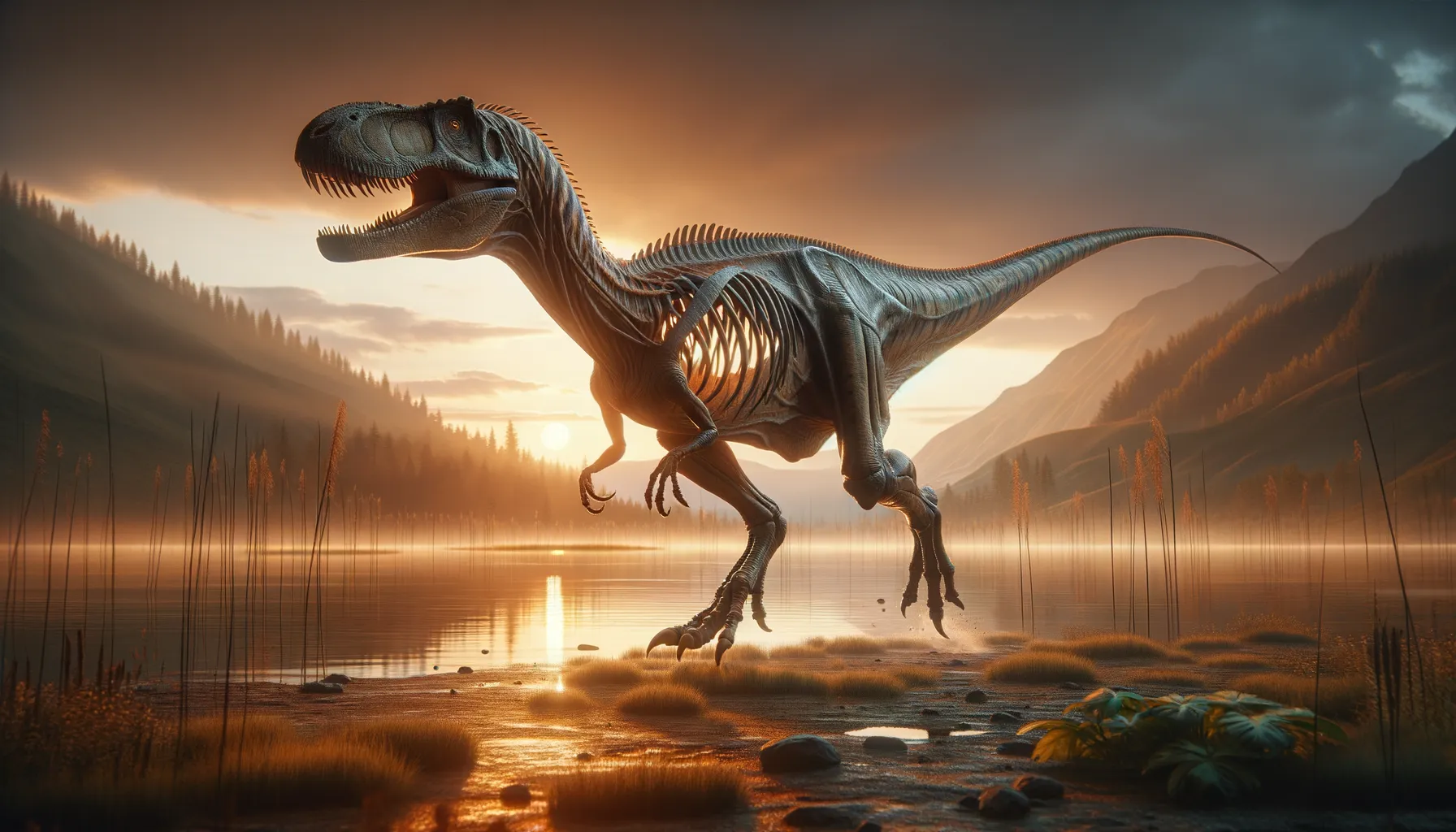
Tonouchisaurus
A Cretaceous era predator with a nimble stride.
Period
Cretaceous
Length
Measured about 6 to 8 meters long.
Height
Approximately 2 to 3 meters tall.
Weight
Weighed around 1 to 1.5 tons.
Tonouchisaurus was a mid-sized theropod dinosaur from the Cretaceous period, known for its moderate speed and relatively robust build. Living in what is now Mongolia, it occupied a niche in its ecosystem as both a predator and scavenger. Its skeletal structure suggests it was a versatile hunter, capable of pursuing small to medium prey.
Diet
Tonouchisaurus was a carnivore, feeding on small to medium-sized dinosaurs and possibly scavenging carrion. Its teeth were adapted to tearing flesh, making it an effective predator in its ecosystem.
Hunting
Tonouchisaurus likely relied on ambush tactics due to its moderate speed, using the element of surprise to catch prey. Its strong legs and tail played crucial roles in short bursts of speed during chases.
Environmental challenges
The Cretaceous period posed several environmental challenges for Tonouchisaurus, including fluctuating climates and competition from other predators. Adaptations in behavior and physical traits likely evolved out of necessity to cope with these challenges. Droughts and changes in vegetation would have impacted the availability of prey, pushing Tonouchisaurus to adapt its hunting strategy.
Speed
Moderate runner, capable of medium speeds.
Lifespan
Estimated around 20 to 30 years.
First discovery
First identified in 2007 in Mongolia.
Fun Facts
- Tonouchisaurus was a small dinosaur, which some scientists believe was only about the size of a turkey.
- It's believed that Tonouchisaurus was a carnivore, meaning it ate meat and possibly small prey or insects.
- This dinosaur lived millions of years ago during the Early Cretaceous period, which makes it really old compared to humans!
- Fossils of Tonouchisaurus have been found in what is now China, showing that it lived in parts of Asia.
- One interesting thing about Tonouchisaurus is its name, which is often a topic of interest among dinosaur enthusiasts.
Growth and Development
As a theropod, growth rates would have been rapid during the early life stages, slowing as it approached maturity. The development of robust muscles and bones would have played a key role in supporting its active lifestyle. Juveniles may have had different diets to help them grow rapidly until they reached a size suitable for hunting larger prey.
Habitat
Tonouchisaurus lived in a semiarid environment with sparse vegetation, which was interspersed with rivers that supported a diversity of plant and animal life. Seasonal changes would have driven migration patterns for prey species, influencing the hunting and survival strategies of Tonouchisaurus. Forested areas provided shelter and nesting sites necessary for its survival.
Interaction with other species
As a predator, it had complex interactions with prey species, balancing predatory and scavenging roles. Tonouchisaurus might have encountered competition from other carnivorous dinosaurs over territory and resources. Symbiotic relationships with certain scavengers could have arisen, taking advantage of kills made by other predators or themselves.
Natural lifespan
Tonouchisaurus had a natural lifespan of about 20 to 30 years.
Reproduction
Tonouchisaurus likely laid eggs in nests, similar to other theropods. Parental care might have been provided, protecting the eggs from predation until hatching. Hatchlings would have been vulnerable, requiring hiding places close to the nests for protection until they were capable of fending for themselves.
Social behaviour
Tonouchisaurus might have exhibited solitary behavior or small group dynamics, especially during hunting. Social interactions could include establishing territories and hierarchies, especially during mating seasons. Communication may have involved vocalizations or physical displays to assert dominance or readiness to mate.
Fossil locations
Fossils of Tonouchisaurus have predominantly been found in Mongolia, offering insight into its anatomy and ecological role. The Gobi Desert has been a primary site, yielding important specimens for paleontologists. These findings have contributed significantly to our understanding of Cretaceous ecosystems in Asia.
